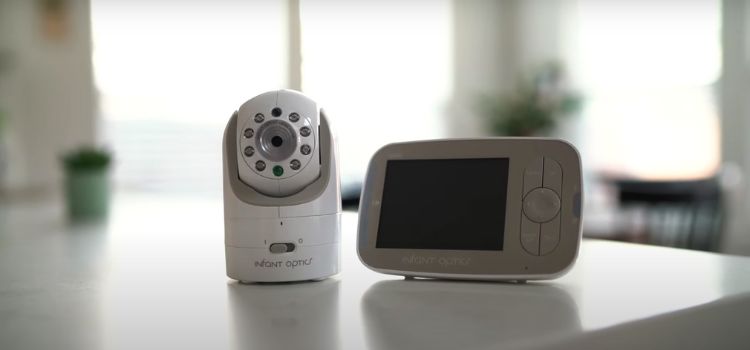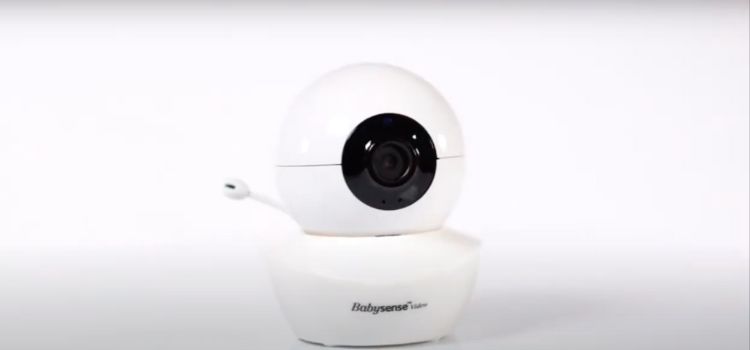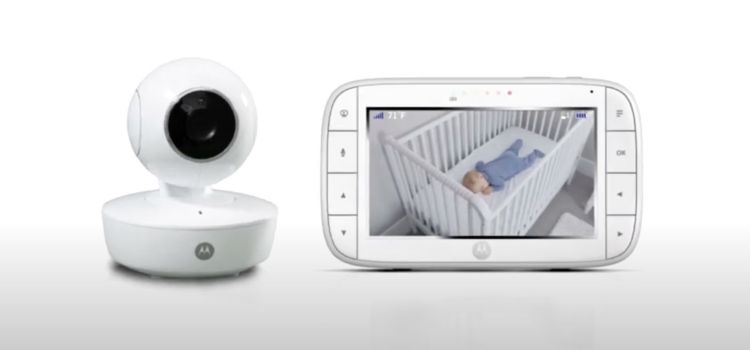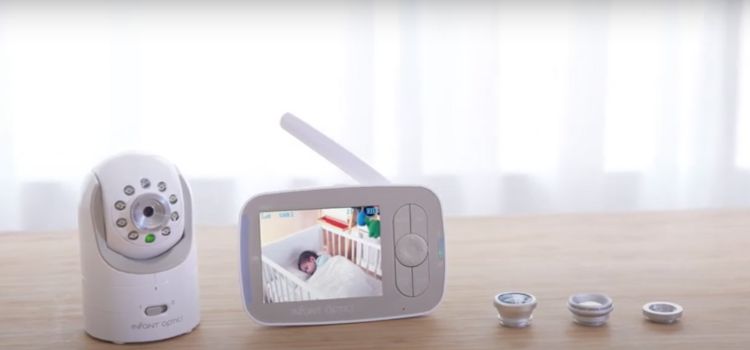As an Amazon Associate I earn from qualifying purchases.
Baby monitors are a crucial piece of equipment for parents since they give them peace of mind and ensure the security of their children. There is another kind of baby monitor that doesn’t require Wi-Fi, even though many of us are aware of the ones that do. We’ll examine the interesting world of non-Wi-Fi baby monitors today and provide some insight into how they work. So let’s learn the secrets of these essential devices and How Do Non-Wifi Baby Monitors Work let parents keep a close eye on their priceless children.

Importance of baby monitors in ensuring the safety and well-being of infants
Baby monitors are crucial for ensuring a child’s safety and well-being. This is especially true with baby monitors without Wi-Fi, which provides a reliable and secure way to keep a close eye on your child. Radio frequency technology is used by non-WI-Fi baby monitors to transmit audio and video signals from the baby’s room to the parent unit.
These monitors enable parents to be informed of any potential threats or issues in real-time, ensuring that they can react quickly. Non-Wi-Fi baby monitors are essential for parents attempting to create a secure atmosphere for their newborns due to their ability to offer peace of mind and ongoing observation.
Explanation of how non-wifi baby monitors work
By enabling parents to keep an eye on their children without relying on WiFi, non-WiFi baby monitors aim to provide parents peace of mind. Radio frequency (RF) technology is used in these monitors to enable the transmission of audio and video signals between the parent unit and the baby unit.
The baby unit, which is frequently positioned near the crib, collects sounds and images and transmits them to the parent unit via RF signal. After then, the parent unit receives and shows the audio and video feed, enabling parents to watch their child in real-time. Parents can always keep tabs on their child’s safety and well-being thanks to this devoted and secure technology, even when there is no WiFi connection.
Understanding Non-WiFi Baby Monitors Work:
Definition and purpose of non-WiFi baby monitors
Non-WiFi baby monitors, also known as non-wireless baby monitors, are gadgets designed to give parents the ability to watch and listen to their infants in real-time. These monitors employ analog or digital signals to transmit data between the camera and the reception unit and operate on a frequency spectrum different from WiFi.
Non-WiFi baby monitors do not require an internet connection, in contrast to WiFi baby monitors, making them a safe and dependable choice for keeping an eye on your kid’s security and well-being. Parents can select the best baby monitor for their needs by being aware of how non-WiFi baby monitors work.
Key features and components of non-WiFi baby monitors
Non-WiFi baby monitors are crucial tools that give parents peace of mind and reassure their children’s safety. For these displays to work properly, a number of essential components and segments are used. Non-WiFi baby monitors employ radio frequencies to transmit audio and video signals between the baby unit and the parent unit instead of relying on a wireless internet connection.

This eliminates the chance of other devices interfering with parents’ ability to watch over their newborns carefully. To accommodate the diverse needs of parents, non-WiFi baby monitors frequently include features like temperature sensors, two-way communication, and night vision.
Technology Behind Non-WiFi Baby Monitors:
Analog Baby Monitors:
A typical radio frequency transmission and reception mechanism is used by analog baby monitors. The baby monitor’s microphone picks up audio signals, which are converted into radio waves and relayed to the receiver device. Parents can hear their baby’s sounds because the receiver collects these radio waves and converts them back into audio signals. The simplicity and clarity of analog baby monitors’ operation is one of their advantages.
They are a reliable option because they don’t need a Wi-Fi connection. The vulnerability of analog baby monitors to interference from other electrical devices operating on the same frequency is one of its limitations, though. The audio signal may become fixed or distorted as a result of this. However, parents who want a non-Wi-Fi option still frequently choose analog baby monitors.
Digital Baby Monitors:
Digital baby monitors give parents a dependable way to check on their newborns from a distance using digital communication and reception technology., It may as opposed to typical analog monitors, convert audio and visual signals into digital data that is then transmitted through a secure digital channel. With the barest amount of interference from other electronic equipment, this ensures a clearer and more reliable connection.
Further enhancing the security of the transmission, digital monitors frequently come with capabilities like frequency hopping and encryption. But even computerized baby monitors have their limits. For instance, they could be more susceptible to signal interference from other equipment operating at the same frequency and have a smaller viewing area than analog monitors. But for parents seeking comfort and peace of mind in seeing their children, digital baby monitors remain a popular option.
Components and Working Mechanism of Non-WiFi Baby Monitors:
Baby Unit:
Basic parts like a microphone for voice communication and a video camera for video communication (if applicable) make up the baby unit of non-WiFi baby monitors. Together, these features give parents a dependable way to keep an eye on their child’s movements and general health.
Parents can hear any noises or shouts coming from the baby’s room thanks to the microphone, which also picks up sounds from other rooms. If the video camera is compromised, the parents will have a visual feed of the child, adding to their sense of security. Parents can check on their baby’s safety and comfort even from a distance thanks to the way non-WiFi baby monitors work.
Parent Unit:
The parent unit of baby monitors without WiFi is made up of a number of essential components that contribute to their performance. The speaker and audio reception system, which enables parents to hear any sounds or noises generated by their kid in real-time, is one crucial component. The display screen, which may be featured in various models, is another crucial component that enables parents to keep an eye on their infant.
Additionally, if the monitor has a camera, the parent unit will reliably receive video and give live video of the child. The combination of these characteristics makes non-WiFi baby monitors a dependable solution for parents by ensuring enough audio and visual monitoring.

Transmission Range and Interference:
Understanding the range limitations of non-WiFi baby monitors
Parents frequently utilize non-WiFi baby monitors to check on the security and well-being of their infants. However, it is crucial to be aware of these devices’ range restrictions. Baby monitors without WiFi often operate on a radio frequency, allowing parents to keep an eye on their child from a distance.
Parents can make educated decisions about where to position the monitor and be aware of any potential range constraints by understanding how non-WiFi baby monitors operate. By being aware of the range restrictions, parents can make sure they are in a position to get a strong signal from the monitor, giving them peace of mind and enabling them to keep a close eye on their child’s activities.
Potential sources of interference and how to minimize them
The positioning of baby monitors without WiFi may be impacted by potential sources of interference. To transmit audio and video signals, these devices use various frequencies, such as DECT (Digital Enhanced Cordless Telecommunications) or FHSS (Frequency Hopping Spread Spectrum).
However, interference can also be caused by other wireless devices including Bluetooth devices, cordless phones, and microwave ovens. It is advised to keep the baby monitor away from these items, especially if they are in the same room, to prevent interference from being misjudged. Additionally, locating the monitor nearer to the receiver, ensuring a direct line of sight, and avoiding obstructions can all help maximize signal strength and reduce potential interruptions.
Security and Privacy Considerations:
Risks associated with non-WiFi baby monitors
Parents need to be aware of special concerns associated with non-WiFi baby monitors. Lack of encryption is one of the key issues since it makes the device vulnerable to hackers. Without adequate security measures, unauthorized individuals could access the monitor and potentially breach the family’s privacy. Additionally, since non-WiFi baby monitors operate on radio frequencies, other electronic gadgets may interfere with them.
This may result in signal problems, missed notifications, or distorted audio. Last but not least, the fixed range of non-WiFi baby monitors makes it possible for parents to be unable to watch over their child from a distance, increasing the possibility of accidents or problems going unnoticed. Parents must assess these hazards and take alternate options into account that prioritize both security and comfort.
Tips for enhancing the security and privacy of non-WiFi baby monitors
Here are a few ideas to keep in mind to improve the security and privacy of non-WiFi baby monitors. In order to ensure that unauthorized individuals cannot block the audio and video signals, first choose a monitor that employs safe digital encryption.
Additionally, ensure that any safety exposures are rectified by frequently updating the baby monitor’s firmware. Instead of utilizing the monitor’s default password, make a strong, individual password. Additionally, it is permitted to turn off remote access functions unless absolutely necessary because they may be a danger to your safety. Last but not least, place the baby monitor in a secure area of your house, away from prying eyes or potential hackers.
Comparison with WiFi Baby Monitors:
Key differences between non-WiFi and WiFi baby monitors
Baby monitors with and without WiFi have different functionality and connectivity possibilities. Baby monitors without WiFi typically rely on a dependable receiver unit, which enables parents to track their child’s movements within a constrained area. These monitors frequently send audio and video signals using radio frequencies.
By connecting to a home’s WiFi network, WiFi baby monitors, on the other hand, provide additional freedom. Parents can now use their smartphones or tablets to view live video and audio streams from any location with an internet connection. Additionally, WiFi baby monitors frequently feature cutting-edge features like two-way communication, remote pan, tilt, and zoom, as well as night vision capabilities, giving parents more comfort and assurance.

Conclusion
In conclusion, To ensure the safety and well-being of your baby, it is crucial to comprehend the workings and characteristics of non-WiFi baby monitors. You can feel at ease knowing that you are providing a secure environment for your child by choosing a dedicated and secure non-WiFi baby monitor.
These monitors provide comfort and relief to parents by including features like temperature sensors, audio and video monitoring, and two-way communication. To improve your baby’s safety and peace of mind, remember to conduct rigorous research and select a reputable company that values privacy and security.
Amazon and the Amazon logo are trademarks of Amazon.com, Inc, or its affiliates.